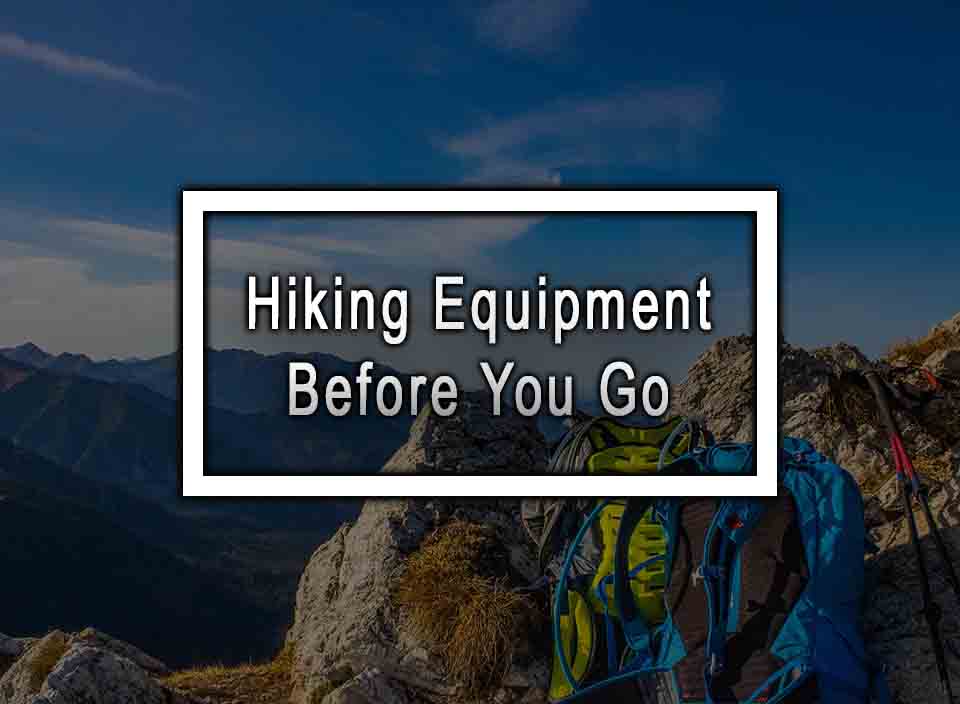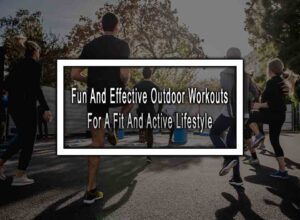Here Are Some Hiking Equipment Before You Go
Hiking has always been one of the most enjoyable and recreational activities for many people around the world. Apart from providing breathtaking views, hiking also has health benefits such as improving cardiorespiratory fitness, reducing the risk of obesity, and promoting lower blood pressure. Hiking not only requires one to be physically fit but also necessitates excellent planning and preparation. With this in mind, it is essential to have the right hiking equipment before heading out. In this article, we will cover some of the essential hiking equipment that every hiker should have before going for a hike and why it are necessary.
Footwear
The right footwear is arguably the most important piece of hiking equipment that every hiker should have. Hiking boots provide protection to your feet and ankle and offer support and stability. The type of boots will depend on the terrain that you will be tackling, such as rocky, muddy, or slippery trails. Ideally, hiking boots should have a sturdy sole, be waterproof, and be breathable. It is also essential to break in new boots before a hike to avoid sore feet and blisters.
Clothing
Having the right clothing can make or break your hiking experience. Dressing in layers can help regulate body temperature, especially during the colder months. It is also essential to consider the material of your clothing when picking what to wear. Avoid cotton as it absorbs moisture and takes a long time to dry. Merino wool and synthetic fabrics such as nylon and polyester are better options as they wick moisture away from the skin and dry quickly.
Backpack
Hiking equipment before you go is a good backpack not only carries all your gear but also distributes weight evenly, providing comfort and balance while hiking. When picking a backpack, it is essential to consider the size of the backpack. A daypack is ideal for day hikes, while a backpack with a larger capacity is ideal for longer hikes. The pack should also have enough compartments to organize your gear and avoid over-packing.
Navigation
Navigational tools such as maps, compasses, and GPS devices are crucial when hiking. It is essential to have a good idea of the trail you will be hiking and carry a map that covers the area you will be hiking in. A compass can help you orient yourself and determine the direction you are heading. GPS devices are excellent for keeping track of your location and providing detailed information about the trail. It is also important to carry spare batteries and learn how to use the tools before heading out.
Sun Protection
Hiking during sunny days can be fun, but it also comes with risks such as sunburn and skin cancer. It is essential to carry and apply sunscreen with an SPF of at least 30. Sunglasses can also provide protection for your eyes from harmful UV rays. A hat or a buff can protect your face and neck from the sun, as well as provide warmth during colder months.
First Aid Kit
Accidents happen, and it is important to be prepared in case of any injuries on the trail. A well-packed first aid kit should have supplies such as adhesive bandages, antiseptic wipes, pain relief medication, and blister treatment. It is also important to include any personal medication that you may need.
Conclusion
Hiking can be an exciting and rewarding activity, but it can also be dangerous if not adequately planned and prepared. Having the right hiking equipment can make your hiking experience more enjoyable and safe. Hiking boots, appropriate clothing, a backpack, navigational tools, sun protection, and a well-packed first aid kit are some of the essential hiking equipment that every hiker should have before heading out. Always remember to check the weather forecast, plan your hike and let someone know your hiking plans before you go. Stay safe and have fun on your hiking adventure!
Hiking Equipment FAQs
Here are the most common questions about hiking equipment.
1. What type of shoes should I wear for hiking?
It is important to wear shoes that are specifically designed for hiking. Look for shoes that have good arch support, a sturdy sole, and good traction. Hiking boots are a good option, but if you’re planning to do less intense hikes, you may also be able to get by with hiking shoes or sneakers with good grip.
2. What should I bring in my hiking backpack?
Your hiking backpack should include essentials such as water, snacks, a map, a first aid kit, sunscreen, and insect repellent. It’s also a good idea to carry a whistle or other signaling device in case of emergency.
3. Should I bring trekking poles on my hike?
Trekking poles can be a helpful tool for hikers, especially on more challenging terrain. They can help with balance, take pressure off of your knees and hips, and assist with navigating steep ascents and descents.
4. What type of clothing should I wear for a hike?
It’s important to wear comfortable and weather-appropriate clothing for hiking. Opt for moisture-wicking shirts and pants, and consider dressing in layers. Bring a rain jacket and hat in case of unexpected weather changes.
5. What should I do if I get lost while hiking?
If you realize you’re lost, stop and take a few deep breaths to stay calm. Stay in one place, as wandering can make it harder for search and rescue teams to find you. Use your map or GPS device to try to determine your location, and make yourself visible with bright clothing or by making noise. If you have a cell phone, use it to call for help or to try to determine your location.
6. How do I properly clean and care for my hiking equipment?
Follow the manufacturer’s instructions for cleaning and caring for your hiking equipment. Most hiking boots and shoes can be cleaned with a damp cloth and mild soap, and you should avoid using heat to dry them. Sleeping bags, tents, and other gear may require specific cleaning methods, so refer to the manufacturer’s instructions. Regularly check your gear for wear and tear, and repair or replace it as needed.












